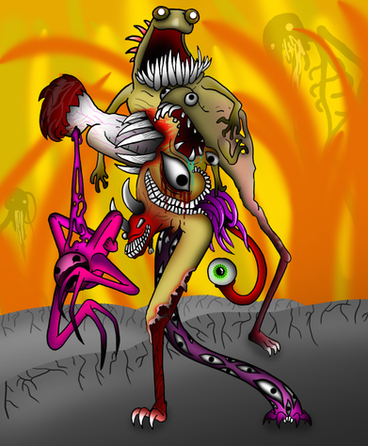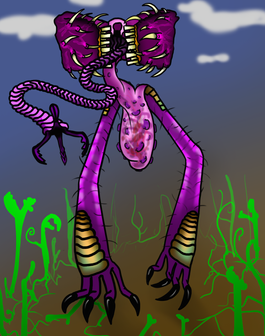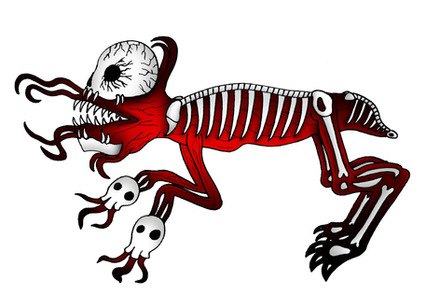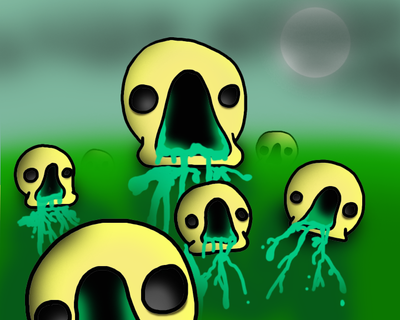HOME | DD
 detectOplasm — Tharkalisk
detectOplasm — Tharkalisk
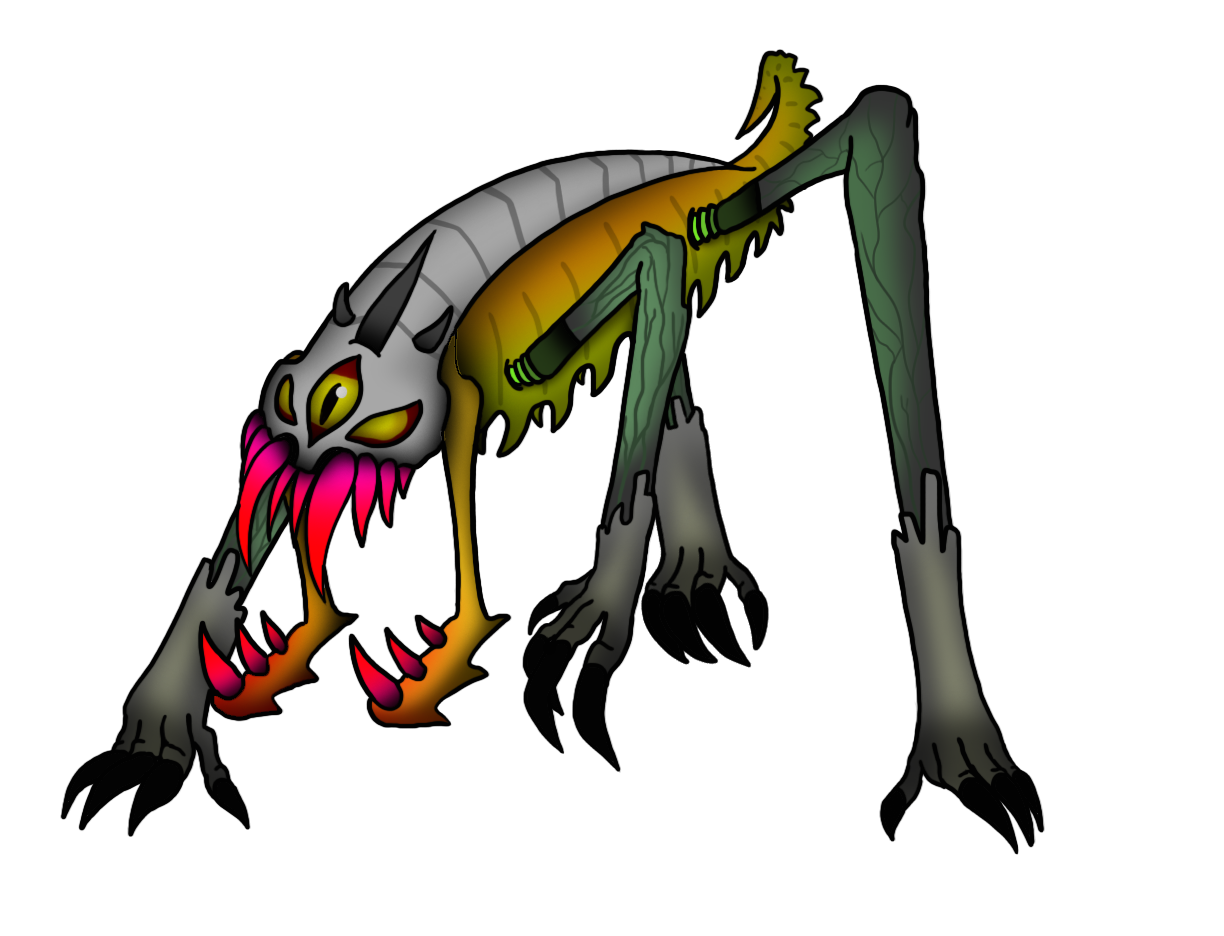
#armadillo #armor #armored #attract #beast #black #brute #claws #creature #dark #defiler #eyes #field #hunger #hungry #hunt #hunter #insect #lanky #magic #mammal #monster #natural #needle #nightmare #open #pierce #pink #point #predator #predatory #scary #sharp #spaces #stocky #tank #teeth #three #tier #darksack100 #top #tharkalisk
Published: 2017-11-16 18:32:14 +0000 UTC; Views: 651; Favourites: 16; Downloads: 0
Redirect to original
Description
The Tharkalisk is a heavily-armored , brutish creature that prefers tepid and spacious environments. This includes plains and rocky, treeless areas, where the creature has free roam and a good field of vision. The Tharkalisk resembles a hybrid of armadillo, insect, and nightmare, but is instead an entirely separate class of organism with no known relative. This has led some to believe the Tharkalisk is artificial, or originates from a foreign source. Whatever its evolutionary history (if such a thing exists), the Tharkalisk has since integrated itself into the ecosystem. One of the most iconic features of a Tharkalisk (aside from its mouth) are the three visual openings on its face. Though it appears to have three eyes, in truth it only has one. This eye cycles through the available openings depending on what it is focused on in relation to it. Should one opening be damaged, it will automatically close to protect itself, and the eye will switch to the remaining biological "portholes". A lesser known trait of the Tharkalisk is its complex tongue, which resembles a lamprey eel. This prehensile organ is not used in feeding or hunting, but helps keep the Tharkalisk's claws and teeth in peak condition by enveloping them and essentially grinding them into the desired shape.The Tharkalisk may not be the top predator of every realm, the fastest creature of every realm, or the most terrifying, but it is a naturally powerful beast with no weaker varieties. Unlike other infamous monsters (such as the Defiler ), the Tharlakisk does not rely on magic or vemon, but pure physical offense and defense. The sharpness of its teeth are matched only by the tips of its thick claws. Its powerfully muscled body is layered with overlapping defensive growths that bear an uncanny resemblance to an exoskeleton. Its underside is studded with pointed spikes to deter attack on what would usually be a vulnerable area. Even its eye is protected by a dense, rapidly-healing membrane. Perhaps the most exposed parts of the creature are the lightly armored legs, but they move quickly, and of course end in claws. Fortunately, the creature is aware of its own capabilities, and does not fear many other lifeforms. As they are predatory creatures, they only attack in the wild when they want to eat the result. Unfortunately they only roam when hungry, so the chances of spotting a Tharkalisk that would also eat you if given the chance are high. When hunting, these creatures can be persistent, but will quickly switch prey if the chances of success are higher. Fighting a Tharkalisk is a difficult task: most creatures are not made to match their strength, and a claw to the face is never to be taken lightly. Even the most seasoned fighters prefer not to engage Tharkalisks in close range physical combat, lest a slip up be exploited and leave them impaled, crushed, or shredded.
For some reason Tharkalisks are attracted to the presence of dark magic, but only in slight quantities. They will lose interest if they detect too much, and other types of magic do not affect them. The dominant theory is that this adaptation allows them to locate and hunt some of their prey, which includes the Defiler: a creature that survives by using natural magic to animate golems. With the right frequency of output, an area can become a magnet for any nearby Tharkalisks, who will likely associate the energy with the presence of food. This makes dark magic experimentation quite dangerous in some areas, lest they attract the wrong attention.
Related content
Comments: 5

Man, i'd love to see what this thing's world looked like
👍: 0 ⏩: 1

Environmentally it's similar to ours (with a few quirks here and there) with a slight difference
in flora. But the creatures are much different. Take a look at some of the other creatures I've made and you'll get an idea of what this thing has to contend with.
👍: 0 ⏩: 1


